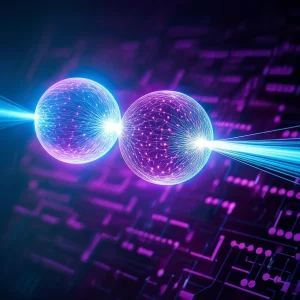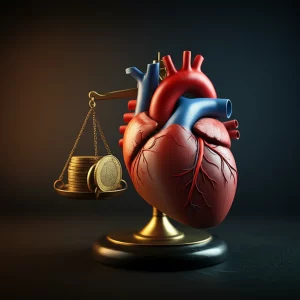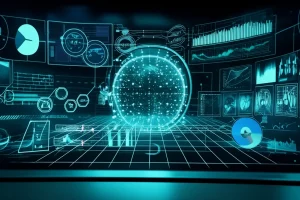Quantum Entanglement: A Boost from Superposed Spacetime?
Okay, so picture this. We’ve got these two massive pillars of physics: quantum theory, which rules the tiny, weird world of particles, and general relativity, which describes gravity and the vastness of spacetime. They’re both incredibly successful in their own domains, but they just don’t play nice together. Reconciling them, finding a theory of quantum gravity, is one of the biggest quests in science right now. It’s like trying to fit two perfectly shaped puzzle pieces that somehow belong to different puzzles entirely.
Most attempts at quantum gravity take a “top-down” approach, trying to build a grand unified theory from scratch. Think of things like string theory or loop quantum gravity. They’re super complex and fascinating, but still works in progress.
But there’s another way to look at it – a “bottom-up” approach. This is where you try to understand the quantum nature of gravity by looking at the fundamental structure of spacetime itself. What if spacetime isn’t just a smooth, fixed background, but has its own quantum quirks?
And that’s where this really neat paper comes in. They dove into a specific kind of spacetime structure called a “causal diamond spacetime.”
Enter the Diamond: Spacetime with a Twist
Imagine an observer who doesn’t live forever. Their existence is bounded by a “birth” event and a “death” event. The region of spacetime they can causally influence or be influenced by forms a shape that looks, well, like a diamond on a spacetime diagram. It’s called a causal diamond.
The crucial thing about this diamond is that it has an “apparent horizon.” This is similar in concept to the event horizon of a black hole, but related to the observer’s limited lifetime and causal access. Information outside this diamond region is simply inaccessible to the observer inside.
Now, turns out, this limited access has consequences for quantum stuff happening within the diamond. When you look at quantum fields (like the Dirac fields that describe particles like electrons) in this classical diamond spacetime, something happens to entanglement.
Entanglement, that spooky connection between particles no matter how far apart they are, is a precious resource for quantum computing and communication. But in the classical causal diamond, due to effects related to the limited causal access (which is kind of like experiencing a thermal bath, similar to the Unruh effect for accelerated observers), this entanglement starts to degrade. It fades away. Not great if you want to do quantum information tasks in this kind of spacetime.
This degradation is quantified using measures like logarithmic negativity and mutual information. Higher values mean more entanglement or correlation. In the classical diamond, as the observer’s lifetime gets shorter (the diamond gets smaller), the “temperature” effectively increases, and the entanglement goes down. Bummer.
The Twist: Superposing Spacetime Itself
But what if spacetime itself isn’t fixed? What if the *structure* of this causal diamond spacetime could be in a quantum superposition? This is the wild idea explored in the paper. Instead of the observer following just one path, imagine their trajectory (and thus the resulting causal diamond) is in a quantum superposition of, say, two different locations or configurations.
To model this, they introduced a quantum “control system” that dictates which spacetime path the observer is on. If the control system is in a superposition state, then the observer’s path, and consequently the causal diamond spacetime they experience, is also in a superposition. It’s like the very stage the quantum particles are playing on is in multiple configurations at once, quantum mechanically.
They analyzed the entanglement of Dirac fields in this superposed diamond spacetime, comparing it to the classical case. They looked at both modes (essentially, different ways the field can vibrate) that were *initially* entangled and modes that were *initially* uncorrelated.

The Big Reveal: Entanglement Gets a Boost
And here’s where it gets really interesting. The results were pretty striking.
In the classical diamond spacetime, as expected, entanglement between initially correlated modes degrades as the diamond gets smaller (shorter lifetime, higher thermal effects). The limited causal access acts like a noisy channel, destroying the quantum connection.
But in the *superposed* diamond spacetime? Get this: the average entanglement between the initially correlated modes was *always* greater than or equal to the entanglement in the classical case. The superposition structure seems to counteract the thermal degradation! It’s like the quantum nature of the spacetime structure itself is protecting or even enhancing the entanglement.
They also looked at initially *uncorrelated* modes. In classical spacetime, these modes might gain *some* correlation due to the thermal effects, but they don’t become truly entangled just by being in the diamond. However, in the superposed diamond spacetime, the superposition structure *actively generates* entanglement between these initially uncorrelated modes.
Think of it this way:
- Classical Diamond: Entanglement goes down (for initially correlated modes).
- Superposed Diamond: Entanglement stays higher (for initially correlated modes) and is *generated* (for initially uncorrelated modes).
The more distinct the superposed spacetime configurations are (represented by parameters in their calculations), the more pronounced this entanglement generation/preservation effect becomes.

Why This Matters: Spacetime as a Quantum Resource
So, why is this such a big deal?
First off, it provides compelling evidence from a “bottom-up” perspective that the nature of spacetime might indeed be inherently quantum. It’s not just a passive stage; it has active quantum properties.
Second, and perhaps even more exciting from a practical (or future-practical) standpoint, these findings suggest that the *characteristics of spacetime structural manifestations* can serve as valuable resources for quantum information processing tasks. The quantum weirdness of spacetime isn’t just a theoretical headache; it could be a tool!
Imagine being able to use the quantum nature of gravity or spacetime to help maintain or even create the entanglement needed for future quantum computers or communication networks operating in complex gravitational environments. This research suggests that the superposition of spacetime structures could be a key ingredient.
It’s a fascinating step towards bridging the gap between quantum mechanics and general relativity, showing that the quantum world and the gravitational world are deeply intertwined in ways we’re only just beginning to understand. The idea that spacetime’s quantum fluctuations could be a source of entanglement is, frankly, mind-bending and incredibly promising.

This work lays a foundational framework for studying entanglement in superposed spacetime and opens up new avenues for exploring the quantum aspects of gravity from the ground up. It makes you wonder what other quantum resources might be hidden within the very fabric of reality!
Source: Springer







